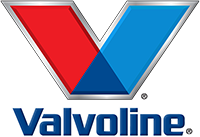MON - FRI: 8:00AM - 5:30PM | SAT: 8:00AM - 5:30PM
MON - FRI: 7:30AM - 5:00PM
SAT: 7:30AM - 4:00PM

Expert Vehicle Inspection & Comprehensive Auto Repair in Fort Mill
Welcome to Tega Cay Oil Change-Valvoline Oil, where we proudly pour our expertise into providing high-quality vehicle inspection and a wide range of comprehensive auto services. As proud partners with Valvoline, we are committed to delivering exceptional automotive care without the need for appointments.
Vehicle Inspection Services: Our skilled technicians conduct meticulous vehicle inspections to ensure your Cars, Trucks, and Diesel Trucks are in top-notch condition. Safety and performance are our top priorities, and we identify potential issues to recommend suitable solutions.
Comprehensive Auto Services: At Tega Cay Oil Change-Valvoline Oil, we offer a diverse range of comprehensive auto services, including air filter replacements, battery changes, brake services, coolant flushes, diesel oil change, differential services, engine flushes, 4×4 maintenance, fuel additives, fuel filter replacements, fuel injection cleaning, lockout services, oil additives, oil changes, oil plug replacements, PCV valve checks, serpentine belt replacements, tire rotations, tire balancing, tire plug services, transmission drain and fill, transmission flushes, transmission filter replacements, and windshield wiper replacements.
Efficiency & Convenience: We understand the value of efficiency and convenience for our customers. Our services are designed to minimize downtime and ensure a seamless experience, whether you need routine maintenance or specialized care for your vehicle.
Exclusive Offers & Savings: Enjoy exciting deals, discounts, and coupons when you choose Tega Cay Oil Change-Valvoline Oil for your automotive needs. We prioritize delivering exceptional value and ensuring that our customers receive the best service at competitive prices.
Serving Fort Mill, SC, Lake Wylie, SC, and Charlotte, NC: Our expert auto services are available not only in Fort Mill, SC but also in Lake Wylie, SC, and Charlotte, NC. Experience the convenience of our locations and expert care for your Cars, Trucks, and Diesel Trucks. Find us conveniently located Near By or Near Me.
Q&As for our Auto Services:
"How To"s:
-
How often should I replace my vehicle’s brake fluid?
Brake fluid should be replaced every two years or as recommended by your vehicle’s manufacturer. Regular brake fluid changes help maintain brake system performance and prevent potential brake issues.
-
What is involved in a brake service?
A brake service typically includes inspecting and replacing brake pads, resurfacing or replacing brake rotors, and checking the brake fluid. Regular brake maintenance ensures safety and reliable stopping power.
-
When should I replace my car’s air filter?
To maintain engine efficiency and prolong its life, replace your car’s air filter every 12,000 to 15,000 miles or as recommended by the manufacturer. Driving in dusty environments may require more frequent changes.
-
How to Check Your Vehicle’s Oil Level
Step 1: Park your vehicle on a level surface and turn off the engine.
Step 2: Open the hood and locate the engine oil dipstick.
Step 3: Pull out the dipstick, wipe it clean, and reinsert it fully.
Step 4: Pull out the dipstick again and check the oil level. It should be between the minimum and maximum marks.
Step 5: If the oil level is low, add the recommended oil type gradually and recheck until it’s within the proper range.
-
How to Change a Car’s Air Filter
Step 1: Open the hood and locate the air filter housing, usually a black rectangular box.
Step 2: Unclasp or unscrew the housing to access the old air filter.
Step 3: Remove the old air filter and inspect it for dirt and debris.
Step 4: If the air filter is dirty or clogged, replace it with a new one of the same size and type.
Step 5: Reattach the housing and secure it in place.
-
How to Rotate Your Vehicle’s Tires
Step 1: Find a flat surface to park your vehicle and engage the parking brake.
Step 2: Loosen the lug nuts on all four tires, but do not remove them completely.
Step 3: Use a car jack to lift one corner of the vehicle at a time and place jack stands securely.
Step 4: Remove the loosened lug nuts and take off the tire.
Step 5: Rotate the tires in the recommended pattern (e.g., front to back, back to front) and place them back on the vehicle. Step 6: Hand-tighten the lug nuts, lower the vehicle, and then fully tighten the lug nuts in a diagonal pattern.
Loading ...
Missing nap lines data / Error occured while getting the data.
